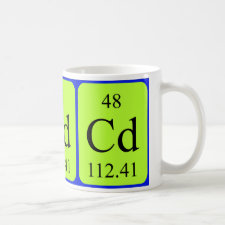
Authors: Zhu F, Li LW, Li N, Liu WF, Liu XG, He SY
Article Title: Selective solid phase extraction and preconcentration of Cd(II) in the solution using microwave-assisted inverse emulsion-suspension Cd(II) ion imprinted polymer.
Publication date: 2021
Journal: Microchemical Journal
Volume: 164
Article Number: 106060.
DOI: 10.1016/j.microc.2021.106060
Alternative URL: https://www.sciencedirect.com/science/article/pii/S0026265X21001442
Abstract: Microwave-assisted inverse emulsion-suspension polymerization was to synthesize Cd(II) ion imprinted polymer (MW@Cd(II)-IIP) using salicylic aldehyde ethylene diamine Schiff Base and methyl methacrylate as functional monomers, Ethylene glycol dimethacrylate as crosslinking agent and Azodiisobutyronitrile as initiator. SEM and FTIR were used to characterize the structure of MW@Cd(II)-IIP. The influences of initial concentration, pH value, temperature and competitive ions on adsorption capacity of MW@Cd(II)-IIP were studied by the static adsorption experiments and competitive adsorption experiments. Under the optimum conditions, the adsorption capacity of MW@Cd(II)-IIP was 179.04 mg g-1. The relative selectivity coefficient k' for Cd2+/Pb2+, Cd2+/Cu2+ and Cd2+/Zn2+ were 2.1061, 4.7306 and 4.5602, showing the good selectivity of MW@Cd(II)-IIP. The pseudo-second-order kinetic model and Langmuir isotherm (R2 > 0.99) could describe the adsorption process of MW@Cd(II)-IIP. The thermodynamic parameters showed that the adsorption process was a spontaneous and endothermic process. MW@Cd(II)-IIP was used as the packing of solid phase extraction column. The extraction efficiency decreased by 9.9% after adsorption and elution. The relative standard deviation (RSD) and the detection limit (3σ) of this method were 2.699% and 0.288 μg L-1 (n = 11). Under the optimum conditions of solid phase extraction, the recovery rate of Cd(II) in waste water samples was 95.22%-104%
Template and target information: cadmium ion, Cd(II)
Author keywords: Microwave-assisted, ion imprinted polymer, Cd(II), adsorption, solid phase extraction



Join the Society for Molecular Imprinting

New items RSS feed
Sign-up for e-mail updates:
Choose between receiving an occasional newsletter or more frequent e-mail alerts.
Click here to go to the sign-up page.
Is your name elemental or peptidic? Enter your name and find out by clicking either of the buttons below!
Other products you may like:
 MIPdatabase
MIPdatabase









